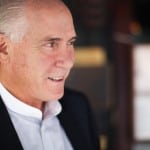Since Ed Ney, former U.S. ambassador and past chairman of Y&R, passed away earlier this month, many wonderful stories have been shared among those who worked with Ed. These are all instructive and worth seeking out—he was an incredibly influential man to those of us who knew and loved him. But our focus here is on Ed’s extraordinary accomplishments as an industry visionary and “category disrupter.” As Young & Rubicam Advertising’s CEO in the 1970s, he saw an opportunity to change the game completely by engineering the acquisition of leading agencies across the marketing world, including what is now Wunderman, Ricotta & Kline, Burson-Marsteller, Landor Associates and others that soon joined Y&R’s portfolio.
Today, mergers and acquisitions in the agency world barely constitute news and large, diverse communications conglomerates are a fact of life for those of us in the business. Not so in the 1970s—this was the “Mad Men” era and, back then, it was all about the ads.
But Ed saw a different path forward. He envisioned a marketing communications empire that crossed disciplines and borders, providing clients with seamlessly integrated global marketing services that linked advertising campaigns with PR initiatives and customer relationship management programs.
Properly conceived and managed, these powerful tools would help generate awareness, attract customers, build brand credibility and then nurture consumer loyalty and sustainable sales for clients. At the time it was a revolutionary concept. Yet he knew the idea was the right one, and he and his team gave it a name: The Whole Egg.
THE PAST AS PROLOGUE
These days every major marketing communications organization promises “integrated communications” and ways to tap into the dizzying array of media channels available. There are varying degrees of success when it comes to PR and marketing campaigns that are truly collaborative, and brands of all stripes continue to struggle with creating (and executing on) integrated communications.
That’s why the fundamentals behind successfully building and executing a comprehensive marketing communications program are just as important now as when they were introduced in the 1970s.
There are many ways to get it wrong, but a few basics are essential to getting it right:
• Suspend your own agenda. The focus of any productive marketing initiative must be about solving the client’s problem, not promoting one’s own agency or discipline. To pull off a well-coordinated campaign or marketing event, one needs strong, highly motivated partners; make sure they are inside the tent all the way and feel welcomed and heard.
• Learn—and stay abreast of—the full range of marketing tools available. No one can be an expert at everything, but successful marketers must remain open to learning where and which outside disciplines can best add to the mix and how to source and apply them.
• Communicate well and often. The means to share information within agencies and among clients may have changed, but the need to do so competently and inclusively has not. With all of the moving parts involved in modern communications, it is more critical than ever that all parties are kept fully abreast of developments, shifts in tactics and swiftly evolving opportunities. This requires discipline, good, clear writing, and frequent contact, pure and simple.
• Measure results. The search for credible metrics in marketing communications has been a long one and we now have more resources than ever at our disposal. There is no one “magic measure” that quantifies success (beyond, perhaps, the cash register) but there are now many sophisticated ways to evaluate which arrows in the quiver are hitting their mark. Learn how and when to use them appropriately.
• Share the glory. Integrated marketing efforts require a team to succeed. Teams need leaders, to be sure, but real leaders celebrate the team, not themselves (or their agency alone). A well-tempered and motivated communications team can move mountains if all are pulling together in service of a common goal.
I don’t think Ed Ney would have argued with any of these principles in 1980. But they are no less hard to follow today than they were then. Perhaps the difference is that now there really is no choice—it is how our clients expect us to work. At WPP, we’ve even given this kind of thinking a new name: “Horizontality.” Whatever you call it, it’s here to stay. PRN
CONTACT:
 Hayes Roth is CMO of Landor Associates. He can be reached at [email protected].
Hayes Roth is CMO of Landor Associates. He can be reached at [email protected].
This story originally ran in the Jan. 27, 2014 issue of PR News.
